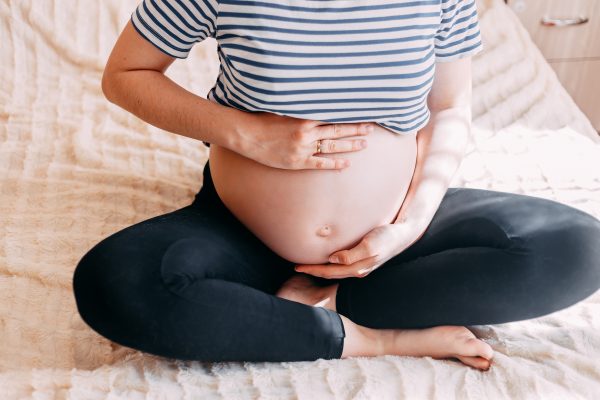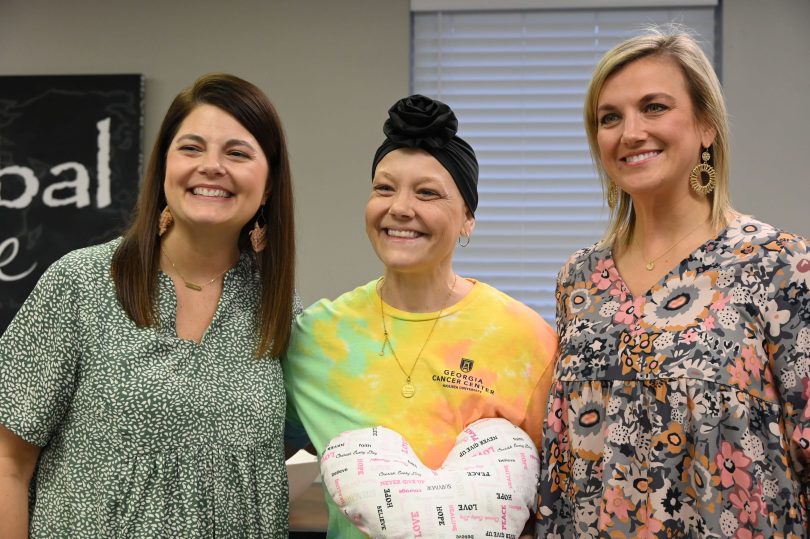When a main character in the period drama Downton Abbey died from pre-eclampsia soon after childbirth, everyone was talking about the condition.
It was about time.
After all, pre-eclampsia, which can affect women after 20 weeks of pregnancy, is still very much a modern problem. According to the Center for Disease Control, pre-eclampsia happens in about 1 in 25 pregnancies in the United States. About 700 women die each year as a result of pregnancy complications.
Modern medicine
Even today, we don’t know exactly why pre-eclampsia happens, said Dr. Manish Jain, an OB/GYN at Augusta University Health.
“It’s thought to be a factor in the placenta that causes the endothelial lining [the lining inside our blood vessels] in a pregnant woman not to work correctly,” he said. “Fluid then leaks out of the blood supply, and that’s where mom can start to have problems.”
Those problems can include:
- High blood pressure of 140/90 or more, measured on two separate occasions six hours or apart
- Protein in the urine
- Swelling, especially in the face, around the eyes or in the hands
- A throbbing headache that won’t go away
- Nausea or vomiting
- Pain in the stomach, shoulders or lower back
- Sudden weight gain of two pounds or more in a single week
- Vision changes, like flashing lights, light sensitivity, auras, blurry vision or spots
- Shortness of breath and anxiety
If you’re thinking this reads like a list of symptoms you’d expect with pregnancy anyway, that’s exactly why pre-eclampsia presents a challenge. “It’s true that many of these warning signs are the classic symptoms that are commonly seen in pregnancy,” said Jain.
While not every woman who has some ankle swelling should be worried about pre-eclampsia, there are some women who may be at higher risk. For example:
- Pregnant women who are younger than 20 or who are 35 and older
- First-time moms
- African-American women or those with sickle cell disease
- Women with lupus or other collagen vascular diseases
- Women who are pregnant with multiples
- If you’ve had pre-eclampsia with an earlier pregnancy or if a family member has had pre-eclampsia
- If you have a history of chronic high blood pressure, diabetes, kidney disease or organ transplant
- If you are obese or have a body mass index of 30 or more
- If you have polycystic ovarian syndrome
- If you became pregnant through in vitro fertilization
And now, as more pregnant mothers tend to be older, obese or have pre-existing medical conditions, rates of pre-eclampsia are rising.
What moms can do
Even though medicine has known about pre-eclampsia for over a century, it’s still a leading cause of pregnancy-related death. Which is why awareness is so important.
“Even if you don’t think it’s anything, we encourage moms to contact their OB/GYN if they experience any of these symptoms, especially if they happen in the third trimester,” said Jain.
For women at high risk for pre-eclampsia, doctors typically will prescribe a low-dose aspirin—between 81 and 325 milligrams—starting about 12 weeks of pregnancy, which has been shown to reduce risk.
If moms have symptoms, they will be admitted to the hospital, and treatment depends on how many weeks the pregnancy is along. Delivering the baby essentially cures pre-eclampsia, but if symptoms show up too early in the pregnancy, doctors may need to consider other solutions to give your baby time to grow.
- After 37 weeks: Expect your baby to be delivered immediately.
- Between 34 and 37 weeks: Doctors will consider delivery.
- Less than 34 weeks: You will have a serious conversation with your doctor about the benefits of conservative management versus immediate delivery, depending on your health and your baby’s health. Conservative management could include steroids to help the fetus’ lungs mature, blood pressure medications for you, and constant monitoring.
During delivery and for 24 hours after giving birth, mothers will be placed on an IV of magnesium sulfate to help reduce the risk that pre-eclampsia will develop into full-blown eclampsia, which causes potentially fatal seizures.
Even though delivery is considered a cure, mothers may still feel some symptoms up to six weeks after delivery, but typically, full recovery from pre-eclampsia happens by two weeks.
“Pre-eclampsia is scary, but when it’s diagnosed in the hands of a good medical team, more than likely, baby and mom will do just great, “said Jain. “It’s something we’re constantly on the lookout for as obstetricians, and it’s both very preventable and very treatable.”





